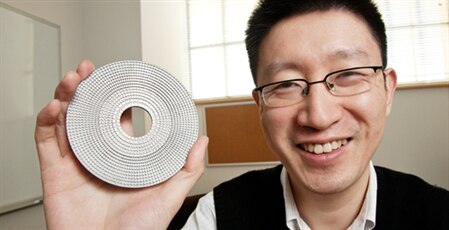Researchers from the University of Illinois have designed a two-dimensional cylindrical cloak made of 16 concentric rings of acoustic circuits structured to guide sound waves. Led by mechanical science and engineering Professor Nicholas Fang, Illinois researchers have demonstrated an acoustic cloak, a technology that renders underwater objects invisible to sonar and other ultrasound waves. Fang's team designed a two-dimensional cylindrical cloak made of 16 concentric rings of acoustic circuits (made out of metamaterial) structured to guide sound waves. Each ring has a different index of refraction, meaning that sound waves vary their speed from the outer rings to the inner ones. “Basically what you are looking at is an array of cavities that are connected by channels. The sound is going to propagate inside those channels, and the cavities are designed to slow the waves down, as you go further inside the rings, sound waves gain faster and faster speed," said Fang. The cloaking technology also may affect nonlinear acoustic phenomena. One problem plaguing fast-moving underwater objects is cavitation, or the formation and implosion of bubbles. Fang and his group believe that they could harness their cloak's abilities to balance energy in cavitation-causing areas, such as the vortex around a propeller. For more information please visit: http://www.news.illinois.edu/news/11/0105sound_fang.html
Zero

